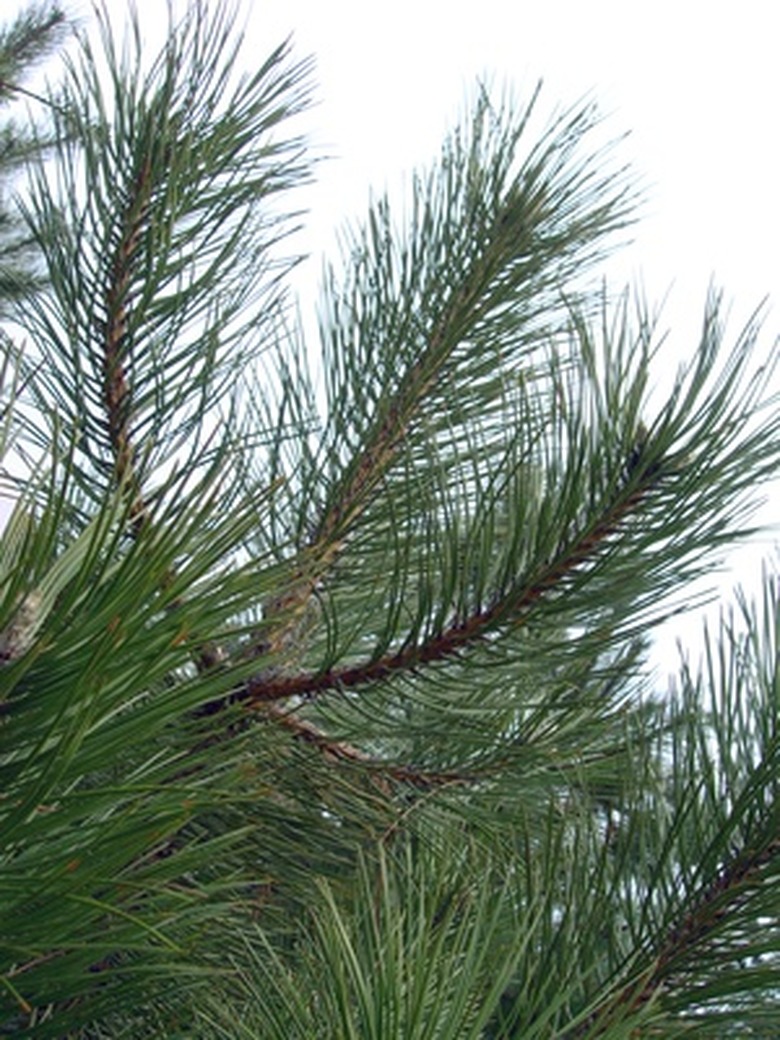Orange Gooey Fungus On Trees
When you're the owner and caretaker of a tree, it's upsetting when you discover something wrong with it. In some cases, and on some trees, certain fungi can grow on the tree. Two species of pine trees are especially subject to an orange fungus that grows on swollen trunks and branches, but it can attack some types of oaks and other trees as well.
Types of Fungi
The University of California at Davis website describes several types of nuisance fungi. From mushrooms that grow in lawns to slime molds such as the "dog vomit" fungus that form gooey masses, not all types of fungi are desirable when they grow on your plants. Although they often help the decomposition of organic materials in soil, some fungi are poisonous to humans and pets. Fusiform gall rust results when the fungus known as Cronartium fusiforme finds a suitable habitat on host trees. It is the most common fungus that causes an orange, gooey mass on trees.
- When you're the owner and caretaker of a tree, it's upsetting when you discover something wrong with it.
- Two species of pine trees are especially subject to an orange fungus that grows on swollen trunks and branches, but it can attack some types of oaks and other trees as well.
Trees Affected
Two types of pine trees are the most common trees to become victims of the fusiform gall rust–the slash pine and the loblolly pine. The slash pine, or Pinus elliottii, is native to the southern United States, according to North Carolina State University. This university also reports that the loblolly pine, or Pinus taeda, occurs in the wild in the southern United States, but its range extends farther north than the slash pine and it does not occur as far as southern Florida, as opposed to the slash pine, which does grow in more tropical environments. The longleaf and shortleaf pines do not develop this fungus, according to the University of Mississippi, but the black oak is susceptible, according to The U.S. Department of Agriculture (USDA) website. Other trees that can contract this rust disease include willows, laurel oaks, bluejack oaks and turkey oaks.
Identification
The orange spores of this form of gall rust often begin to become noticeable in early spring. March and April are the typical months when this fungus begins to form a colony. If you live near the Gulf Coast or south Atlantic, your trees are more likely to develop this disease. Orange spores begin to form on the leaves of pine and oak trees beginning in late February and continuing until April. Wherever the spores land, due to being blown by wind, an infection begins to occur. Within 10 days, small orange pustules form on the undersides of leaves. When the infection spreads, it grows into the tree's stems and branches, causing them to become weak and eventually die back.
- Two types of pine trees are the most common trees to become victims of the fusiform gall rust–the slash pine and the loblolly pine.
- This university also reports that the loblolly pine, or Pinus taeda, occurs in the wild in the southern United States, but its range extends farther north than the slash pine and it does not occur as far as southern Florida, as opposed to the slash pine, which does grow in more tropical environments.
Effects
When the rust attacks young trees under the age of 10 years, they are more likely to succumb than when the rust attacks older trees. Older trees, however, can develop cankers as a result of the rust, deforming them and slowing growth. Defoliation can occur and branches can become weak, which increases the danger that they might break off in high winds and damage not only the tree but nearby structures and vehicles.
Prevention/Solution
The USDA website suggests planting varieties of trees that are resistant to the fusiform gall rust. Another suggestion is to spray trees with silvicultural and chemical products designed to control fungal diseases. You can prune affected branches of young trees to stop the infection from growing into their trunks if you catch the symptoms early. In commercial groves, the USDA recommends planting trees more closely than they might normally be planted; this practice will keep the number of healthy trees high when some trees die as a result of infection from the fusiform gall rust disease.
- When the rust attacks young trees under the age of 10 years, they are more likely to succumb than when the rust attacks older trees.
- In commercial groves, the USDA recommends planting trees more closely than they might normally be planted; this practice will keep the number of healthy trees high when some trees die as a result of infection from the fusiform gall rust disease.
